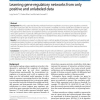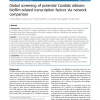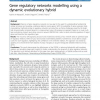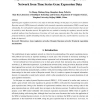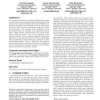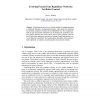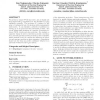120
click to vote
BMCBI
2010
15 years 23 days ago
2010
Background: Recently, supervised learning methods have been exploited to reconstruct gene regulatory networks from gene expression data. The reconstruction of a network is modeled...
111
Voted
BMCBI
2010
15 years 23 days ago
2010
Background: Candida albicans is a commonly encountered fungal pathogen in humans. The formation of biofilm is a major virulence factor in C. albicans pathogenesis and is related t...
126
Voted
BMCBI
2010
15 years 23 days ago
2010
Background: Inference of gene regulatory networks is a key goal in the quest for understanding fundamental cellular processes and revealing underlying relations among genes. With ...
154
Voted
BIOCOMP
2006
15 years 2 months ago
2006
Exploring gene regulatory network is a key topic in molecular biology. In this paper, we present a new dynamic Bayesian network (DBN) framework embedded with structural expectatio...
117
click to vote
GECCO
2006
Springer
15 years 4 months ago
2006
Springer
In this paper, we address the problem of finding gene regulatory networks from experimental DNA microarray data. We focus on the evaluation of the performance of different evoluti...
100
click to vote
CMSB
2006
Springer
15 years 4 months ago
2006
Springer
Having in mind the large-scale analysis of gene regulatory networks, we review a graph decimation algorithm, called "leaf-removal", which can be used to evaluate the feed...
ICES
2003
Springer
15 years 5 months ago
2003
Springer
The fractal protein is a new concept for improving evolvability, scalability, exploitability and providing a rich medium for evolution. Here the idea of fractal proteins is introdu...
107
Voted
ECAL
2003
Springer
15 years 5 months ago
2003
Springer
Fractal proteins are a new evolvable method of mapping genotype to phenotype through a developmental process, where genes are expressed into proteins comprised of subsets of the Ma...
104
Voted
GLVLSI
2003
IEEE
15 years 6 months ago
2003
IEEE
We present a unique FPGA that uses a mix of digital and large-signal analog computation for the simulation of gene regulatory networks. The prototype IC consists of a 4x5 array of...
131
click to vote
ECCB
2003
IEEE
15 years 6 months ago
2003
IEEE
This article deals with the identification of gene regulatory networks from experimental data using a statistical machine learning approach. A stochastic model of gene interactio...
